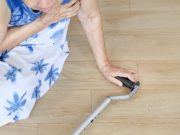Tag: Incontinence
In OAB, Nocturnal Urinary Frequency Tied to Bruises, Fractures From Falls
Increasing nocturnal urination frequency is common risk factor for falls with bruises and fractures in older adults with OAB
Pediatric Neurogenic Bladder Cases Are Not Fully Evaluated
Over 24 months, 21.5 percent of patients used overactive bladder medications; 10.8 percent underwent clean intermittent catheterization
Higher Rate of Bladder Neck Incompetence in Mixed Urinary Incontinence
Significantly higher rates of BNI, urethral incompetence seen in patients with OAB symptoms after anti-incontinence surgery
Lower UTI Dysfunction Often Not Thoroughly Evaluated in Neurogenic Bladder
Urodynamics used in 3.0 percent of pediatric patients with NGB; clean intermittent catheterization used in 9.3 percent
Percutaneous Tibial Nerve Stimulation Beneficial for Overactive Bladder
Improvement seen in overactive bladder symptoms of urinary urgency, nocturia, incontinence, and frequency after 12 weeks of PTNS
Exercise in Middle-Age Not Linked to Pelvic Floor Disorders
However, likelihood of urge urinary incontinence increased with early adulthood history of competitive sports
Artificially Sweetened Drinks May Up Risk for Urinary Incontinence
Higher risk seen among women drinking one or more beverages per day
Overactive Bladder Common in Postacute COVID-19 Syndrome
COVID-19 may lead to new or worsening urinary symptoms in men and women
Novel Device Studied in Treatment of Refractory Overactive Bladder
SacralStim system for sacral neuromodulation has an electrode with six, rather than four, contact points
Pathophysiology of Nocturnal Enuresis Explored in Adult Women
Risk factors for NE severity included incontinence symptoms, poor flow, increased bladder sensation, detrusor overactivity and underactivity














